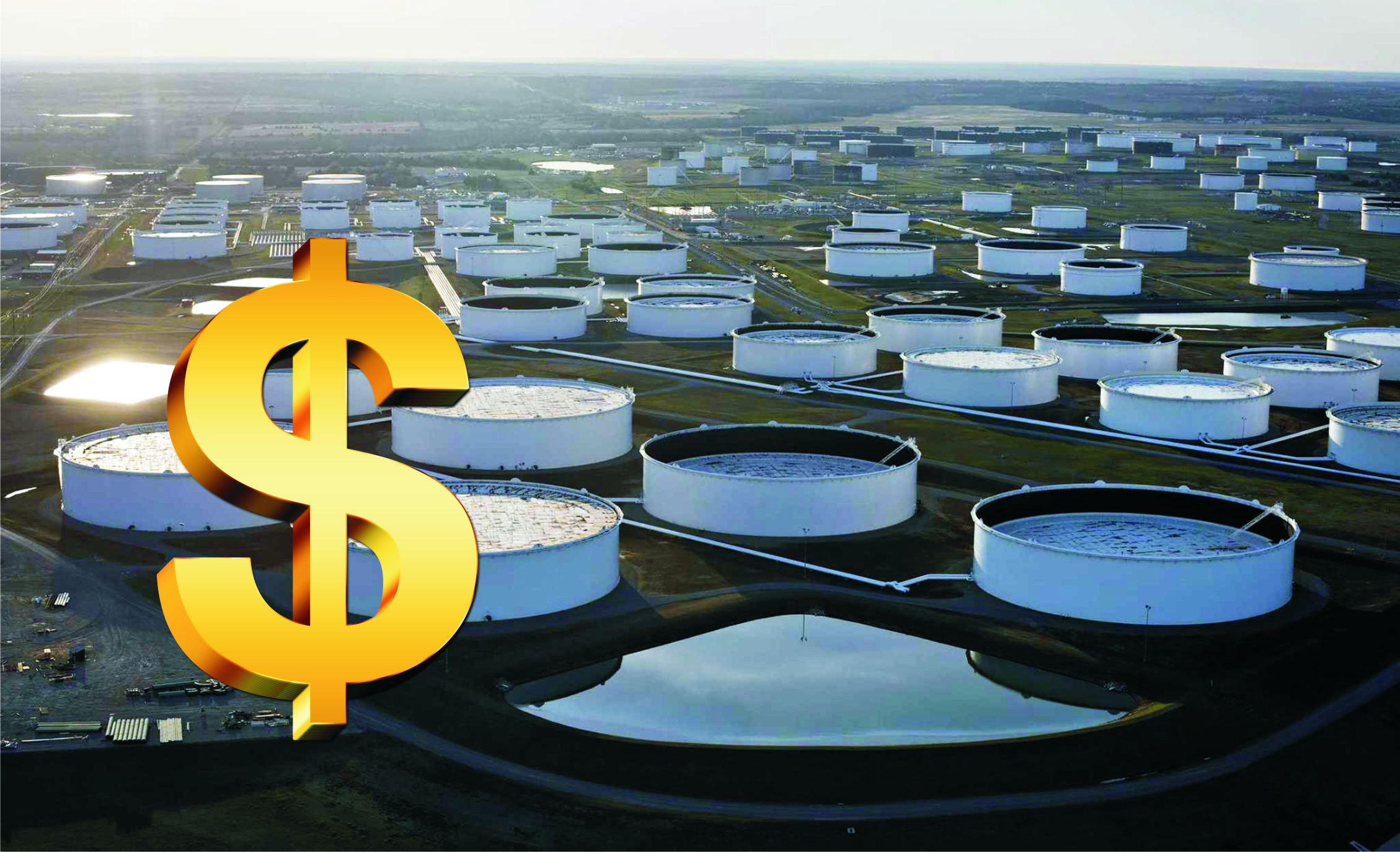Oil & Energy
Iraq Announces Deals To Boost Oil And Gas Output

Iraq has been saying it wants to produce more oil and gas for a while now but turning stated ambitions into reality has taken a while.
This week, the country took a big step towards that reality when it signed a slew of deals with foreign companies as part of plans to boost both crude oil and natural gas production considerably.
Gas production growth appears to be especially important because right now, Iraq is heavily reliant on neighbor Iran for its gas needs, which puts it into a vulnerable position.
The government in Baghdad inked deals with one Emirati company and two Chinese ones, aiming for oil production growth of a quarter of a million barrels daily and additional natural gas output of 800 million cu ft daily.
Iraq is OPEC’s second-largest oil producer, pumping 4.5 million barrels every day. In previous years government officials had said production capacity could grow to 5 million bpd and even 6 million bpd but little has been done to advance these plans.
The reasons for that slow progress include the politically unstable situation in the country, the dynamics of the oil industry that has seen companies prioritize low-cost, fast-return projects after the last two downturns, and predictions of peak oil demand.
Several oil majors, including Exxon, left Iraq altogether in the past few years, citing the uncertain outlook for its oil industry. Yet successive governments did not give up their plans for greater oil production despite the OPEC+ output quotas, and significantly higher natural gas production.
One of the companies that will be helping Iraq advance these plans is UAE-based Crescent Petroleum. The firm signed three long-term contracts for the exploration and development of three oil and gas fields.
Two of these fields—Gilabat-Qumar and Khashim, in the province of Dyala—are expected to begin producing natural gas within 18 months at a rate of 250 million cu ft daily, Crescent Petroleum said. The third field that Crescent Petroleum will explore is in the province of Basra.
The second of Baghdad’s new oil and gas development partners, Chinese United Energy Group inked a deal with the government to develop the Sindbad oil field, also in Basra.
The third company that signed a deal with the Iraqi government was also Chinese, Geo-Jade Petroleum Co. It will develop the Huwaiza oil field and the Naft Khana field, both near the Iranian border, Reuters noted in a report on the news.
All the contracts signed this week have a duration of 20 years and should help boost Iraq’s energy security in the natural gas department, reducing its bill for gas imports from Iran at a time when its economy is struggling to remain operational.
As a result of the deals signed this week, Iraq could suspend natural gas imports in three years, according to Prime Minister Mohammed Al-Sudani. Commenting on the deals, Al-Sudani said gas imports from Iran are costing the Baghdad budget between $5.5 and $6.8 billion a year, Zawya reported.
“We have decided to enter the global gas market and we will push ahead with projects to develop our gas resources and stop gas flaring because shortages in domestic gas supply are the main cause of our electricity supply problems,” Al-Sudani said.
To further these plans, Iraq will also launch tenders for exploration blocks in the northern, western and central parts of the country in the near future, Oil Minister Hayan Abdel-Ghanisaid this week.
Oil output should also grow. According to the IMF, this year, Iraq could produce 4.6 million bpd, up from 4.4 million bpd last year, The National reported. By 2027, oil production could reach 5 million bpd, the IMF also forecast. Perhaps Iraq’s oil and gas ambitions finally have a chance of panning out.
Kennedy reports for Oilprice.com
Oil & Energy
FG Woos IOCs On Energy Growth
The Federal Government has expressed optimism in attracting more investments by International Oil Companies (IOCs) into Nigeria to foster growth and sustainability in the energy sector.
This is as some IOCs, particularly Shell and TotalEnergies, had announced plans to divest some of their assets from the country.
Recall that Shell in January, 2024 had said it would sell the Shell Petroleum Development Company of Nigeria Limited (SPDC) to Renaissance.
According to the Minister of State for Petroleum Resources (Oil), Heineken Lokpobiri, increasing investments by IOCs as well as boosting crude production to enhancing Nigeria’s position as a leading player in the global energy market, are the key objectives of the Government.
Lokpobiri emphasized the Ministry’s willingness to collaborate with State Governments, particularly Bayelsa State, in advancing energy sector transformation efforts.
The Minister, who stressed the importance of cooperation in achieving shared goals said, “we are open to partnerships with Bayelsa State Government for mutual progress”.
In response to Governor Douye Diri’s appeal for Ministry intervention in restoring the Atala Oil Field belonging to Bayelsa State, the Minister assured prompt attention to the matter.
He said, “We will look into the issue promptly and ensure fairness and equity in addressing state concerns”.
Lokpobiri explained that the Bayelsa State Governor, Douyi Diri’s visit reaffirmed the commitment of both the Federal and State Government’s readiness to work together towards a sustainable, inclusive, and prosperous energy future for Nigeria.
While speaking, Governor Diri commended the Minister for his remarkable performance in revitalisng the nation’s energy sector.
Oil & Energy
Your Investment Is Safe, FG Tells Investors In Gas
The Federal Government has assured investors in the nation’s gas sector of the security and safety of their investments.
Minister of State for Petroleum Resources (Gas), Ekperikpe Ekpo, gave the assurance while hosting top officials of Shanghai Huayi Energy Chemical Company Group of China (HUAYI) and China Road and Bridge Corporation, who are strategic investors in Brass Methanol and Gas Hub Project in Bayelsa State.
The Minister in a statement stressed that Nigeria was open for investments and investors, insisting that present and prospective foreign investors have no need to entertain fear on the safety of their investment.
Describing the Brass project as one critical project of the President Bola Tinubu-led administration, Ekpo said.
“The Federal Government is committed to developing Nigeria’s gas reserves through projects such as the Brass Methanol project, which presents an opportunity for the diversification of Nigeria’s economy.
“It is for this and other reasons that the project has been accorded the significant concessions (or support) that it enjoys from the government.
“Let me, therefore, assure you of the strong commitment of our government to the security and safety of yours and other investments as we have continually done for similar Chinese investments in Nigeria through the years”, he added.
Ekpo further tasked investors and contractors working on the project to double their efforts, saying, “I want to see this project running for the good of Nigeria and its investors”.
Earlier in his speech, Leader of the Chinese delegation, Mr Zheng Bi Jun, said the visit to the country was to carry out feasibility studies for investments in methanol projects.
On his part, the Managing Director of Brass Fertiliser and Petrochemical Ltd, Mr Ben Okoye, expressed optimism in partnering with genuine investors on the project.
Oil & Energy
Oil Prices Record Second Monthly Gain
Crude oil prices recently logged their second monthly gain in a row as OPEC+ extended their supply curb deal until the end of Q2 2024.
The gains have been considerable, with WTI adding about $7 per barrel over the month of February.
Yet a lot of analysts remain bearish about the commodity’s prospects. In fact, they believe that there is enough oil supply globally to keep Brent around $81 this year and WTI at some $76.50, according to a Reuters poll.
Yet, like last year in U.S. shale showed, there is always the possibility of a major surprise.
According to the respondents in that poll, what’s keeping prices tame is, first, the fact that the Red Sea crisis has not yet affected oil shipments in the region, thanks to alternative routes.
The second reason cited by the analysts is OPEC+ spare capacity, which has increased, thanks to the cuts.
“Spare capacity has reached a multi-year high, which will keep overall market sentiment under pressure over the coming months”, senior analyst, Florian Grunberger, told Reuters.
The perception of ample spare capacity is definitely one factor keeping traders and analysts bearish as they assume this capacity would be put into operation as soon as the market needs it. This may well be an incorrect assumption.
Saudi Arabia and OPEC have given multiple signs that they would only release more production if prices are to their liking, and if cuts are getting extended, then current prices are not to OPEC’s liking yet.
There is more, too. The Saudis, which are cutting the most and have the greatest spare capacity at around 3 million barrels daily right now, are acutely aware that the moment they release additional supply, prices will plunge.
Therefore, the chance of Saudi cuts being reversed anytime soon is pretty slim.
Then there is the U.S. oil production factor. Last year, analysts expected modest output additions from the shale patch because the rig count remained consistently lower than what it was during the strongest shale boom years.
That assumption proved wrong as drillers made substantial gains in well productivity that pushed total production to yet another record.
Perhaps a bit oddly, analysts are once again making a bold assumption for this year: that the productivity gains will continue at the same rate this year as well.
The Energy Information Administration disagrees. In its latest Short-Term Energy Outlook, the authority estimated that U.S. oil output had reached a record high of 13.3 million barrels daily that in January fell to 12.6 million bpd due to harsh winter weather.
For the rest of the year, however, the EIA has forecast a production level remaining around the December record, which will only be broken in February 2025.
Oil demand, meanwhile, will be growing. Wood Mackenzie recently predicted 2024 demand growth at 1.9 million barrels daily.
OPEC sees this year’s demand growth at 2.25 million barrels daily. The IEA is, as usual, the most modest in its expectations, seeing 2024 demand for oil grow by 1.2 million bpd.
With OPEC+ keeping a lid on production and U.S. production remaining largely flat on 2023, if the EIA is correct, a tightening of the supply situation is only a matter of time. Indeed, some are predicting that already.
Natural resource-focused investors Goehring and Rozencwajg recently released their latest market outlook, in which they warned that the oil market may already be in a structural deficit, to manifest later this year.
They also noted a change in the methodology that the EIA uses to estimate oil production, which may well have led to a serious overestimation of production growth.
The discrepancy between actual and reported production, Goehring and Rozencwajg said, could be so significant that the EIA may be estimating growth where there’s a production decline.
So, on the one hand, some pretty important assumptions are being made about demand, namely, that it will grow more slowly this year than it did last year.
This assumption is based on another one, by the way, and this is the assumption that EV sales will rise as strongly as they did last year, when they failed to make a dent in oil demand growth, and kill some oil demand.
On the other hand, there is the assumption that U.S. drillers will keep drilling like they did last year. What would motivate such a development is unclear, besides the expectation that Europe will take in even more U.S. crude this year than it already is.
This is a much safer assumption than the one about demand, by the way. And yet, there are indications from the U.S. oil industry that there will be no pumping at will this year. There will be more production discipline.
Predicting oil prices accurately, even over the shortest of periods, is as safe as flipping a coin. With the number of variables at play at any moment, accurate predictions are usually little more than a fluke, especially when perceptions play such an outsized role in price movements.
One thing is for sure, though. There may be surprises this year in oil.
lrina Slav
Slav writes for Oilprice.com.
-
Business1 hour ago
NCAA Explains Impending Ibadan Airport Shutdown
-

 News2 hours ago
News2 hours agoOkogbule Steps Down, Lauds Fubara For Support As RSU VC
-
Rivers1 hour ago
Farmers Urge Govt, Corporate Bodies For Support … Wants More Youths In Farming
-
Business1 hour ago
MTN Lose N400bn Earnings Over Naira Devaluation
-
News2 hours ago
Don Tasks Varsities On Artificial Intelligence
-
Rivers1 hour ago
Group Predicts Garden City Status Return For Rivers … Lauds Fubara Over New RIWAMA Boss’ Appointment
-
Business1 hour ago
Firm converts 15,000 Vehicles To Run On CNG
-

 Niger Delta2 hours ago
Niger Delta2 hours agoNavy Seals Illegal Refining Sites In N’Delta

